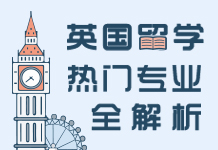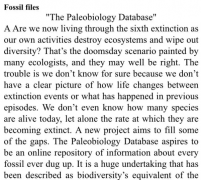2015年8月8日雅思考试阅读考题回顾
来源:未知
浏览:
发布日期:2015-10-22 18:02
摘要:小编为大家带来了2015年8月8日雅思考试阅读考题回顾及解析,希望能为大家提供帮助~
| 考试日期: | 2015.8.8 |
| Passage 1 |
Title:The history of tea Question types: 填空7+判断6 |
| 机经版本号 | 版本号:旧(海外版剑十) |
| 难度分析 | 常规有序题的排列组合,难度不大。 |
| 真题还原 |
参考文章: The History of Tea A story of tea began in ancient China over 5,000 years ago. According to legend, ShenNung, an early emperor was a skilled ruler, creative scientist and patron of the arts. His far-sighted edicts required, among other things, that all drinking water boiled as a hygienic precaution. One summer day while visiting a distant region of his realm, he and the court stopped to rest. In accordance with his ruling, the servants began to boil water for the court to drink. Dried leaves from the nearby bush fell into the boiling water, and a brown liquid was infused into the water. As a scientist, the Emperor was interested in the new liquid, drank some, and found it very refreshing. And so, according to legend, tea was created. B Tea consumption spread throughout the Chinese culture reaching into every aspect of the society. In800 A.D. Lu Yu wrote the first definitive book on tea, the Ch'a Ching. This amazing man was orphaned as a child and raised by scholarly Buddhist monks in one of China's finest monasteries. Patronized by the Emperor himself, his work clearly showed the Zen Buddhist philosophy to which he was exposed as a child. It was this form of tea service that Zen Buddhist missionaries would later introduce to imperial Japan. The first tea seeds were brought to Japan by the returning Buddhist priest Yeisei, who had seen the value of tea in China in enhancing religious mediation. As a result, he is known as the "Father of Tea" in Japan. Because of this early association, tea in Japan has always been associated with Zen Buddhism. Tea received almost instant imperial sponsorship and spread rapidly from the royal court and monasteries to the other sections of Japanese society. Tea was elevated to an art form resulting in the creation of the Japanese Tea Ceremony ("Cha-no-you" or "the hot water for tea"). The best description of this complex art form was probably written by the Irish-Greek journalist-historian Lafcadio Hearn, one of the few foreigners ever to be granted Japanese citizenship during this era. He wrote from personal observation, "The Tea ceremony requires years of training and practice to graduate in art...yet the whole of this art, as to its detail, signifies no more than the making and serving of cup of tea. The supremely important matter is that the act be performed in the most perfect, most polite, most graceful, most charming manner possible”. Such purity of form, of expression prompted the creation of supportive arts and services. A special form of architecture (chase) developed for "teahouses", based on the duplication of the simplicity of a forest cottage. The cultural/artistic hostesses of Japan, the Geisha, began to specialize in the presentation of the tea ceremony. As more and more people became involved in the excitement surrounding tea, the purity of the original Zen concept was lost. The tea ceremony became corrupted, boisterous and highly embellished. "Tea Tournaments" were held among the wealthy where nobles competed among each other for rich prizes in naming various tea blends. Rewarding winners with gifts of silk, armor, and jewelry was totally alien to the original Zen attitude of the ceremony. Three great Zen priests restored tea to its original place in Japanese society. One of them is Sen.-no Ricky (1521-1591)-priest who set the rigid standards for the ceremony, largely used intact today. Risky was successful in influencing the Shogun Toyotomi Hideyoshi, who became Japan's greatest patron of the "art of tea". A brilliant general, strategist, poet, and artist this unique leader facilitated the final and complete integration of tea into the pattern of Japanese life. So complete was this acceptance, that tea was viewed as the ultimate gift, and warlords paused for tea before battles. While tea was at this high level of development in both Japan and China, information concerning this then unknown beverage began to filter back to Europe. Earlier caravan leaders had mentioned it, but were unclear as to its service format or appearance. (One reference suggests the leaves be boiled, salted, buttered, and eaten!) The first European to personally encounter tea and write about it wastes Portuguese Jesuit Father Jasper de Cruz in 1560. Portugal, with her technologically advanced navy, had been successful in gaining the first right of trade with China. It was as a missionary on that first commercial mission that Father de Cruz had tasted tea four years before. The Portuguese developed a trade route by which they shipped their tea to Lisbon, and then Dutch ships transported it to France, Holland, and the Baltic countries. (At that time Holland was politically affiliated with Portugal. When this alliance was altered in 1602, Holland, with her excellent navy, entered into full Pacific trade in her own right.) Because of the success of the Dutch navy in the Pacific, tea became very fashionable in the Dutch capital, the Hague. This was due in part to the high cost of theta (over $100 per pound) which immediately made it the domain of the wealthy. Slowly, as the amount of tea imported increased, the price fell as the volume of sale expanded. Initially available to the public in apothecaries along with such rare and new spices as ginger and sugar, by 1675 it was available in common food shops throughout Holland. As the consumption of tea increased dramatically in Dutch society, doctors and university authorities argued back and forth as to the negative and/or positive benefits of tea. Known as "tea heretics", the public largely ignored the scholarly debate and continued to enjoy their new beverage though the controversy lasted from 1635 to roughly 1657. Throughout this period France and Holland led Europe in the use of tea. GAs the craze for things oriental swept Europe; tea became part of the way of life. The social critic Marie de Rebutting-Chantal, the Marquise de Seven makes the first mention in 1680 of adding milk to tea. During the same period, Dutch inns provided the first restaurant service of tea. Tavern owners would furnish guests with a portable tea set complete with a heating unit. The independent Dutchman would then prepare tea for himself and his friends outside in the tavern’s garden. Tea remained popular in France for only about fifty years, being replaced by a stronger preference for wine, chocolate, and exotic coffees. Great Britain was the last of the three great sea-faring nations to break into the Chinese and* East Indian trade routes. This was due in part to the unsteady ascension to the throne of the Stuarts and the Cromwell and Civil War. The first samples of tea reached England between 1652 and 1654. Tea quickly proved popular enough to replace ale as the national drink of England. Asian Holland, it was the nobility that provided the necessary stamp of approval and so insured its acceptance. King Charles II had married, while in exile, the Portuguese Infanta Catherine de Braganza (1662). Charles himself had grown up in the Dutch capital. As a result, both he and his Portuguese bride were confirmed tea drinkers. When the monarchy was re-established, the two rulers brought this foreign tea tradition to England with them. Imperial Russia was attempting to engage China and Japan in trade at the same time as the East Indian Company. The Russian interest in tea began as early as 1618 when the Chinese embassy in Moscow presented several chests of tea to Czar Alexis. By1689 the Trade Treaty of Newchinsk established a common border between Russia and China, allowing caravans to then cross back and forth freely. Still, the journey was not easy. The trip was 11,000 miles long and took over sixteen months to complete. The average caravan consisted of 200 to 300 camels. As result of such factors, the cost of tea was initially prohibitive and available only to the wealthy. By the time Catherine the Great died (1796), the price had dropped some, and tea was spreading throughout Russian society. |
| 参考答案 |
参考答案: 1. Tombs 206AD在汉朝发掘古墓时发现茶叶 2. Books 8世纪第一本讲茶叶的书 3. Monks日本的僧人第一次把茶叶带出中国,带入日本 4. Dutch荷兰人把茶叶带到欧洲 5. Smugglingtaxation很高,人民铤而走险走私茶叶,英国不得不减税 6. Clippers有了快船来运送茶叶 7. India茶叶开始在中国以外的地方种植 8. FALSE16世纪,茶在英国很受欢迎,原文否定 9. NOTGIVEN茶叶在欧洲比咖啡更流行,原文未提及 10. FALSE茶叶在所有阶层都很普及,原文中说只有上流社会普及 11. TRUEadulteration是导致政府减税的一项原因。 12. NOTGIVENfastest vessel owned by America,原文未提及 13. TRUEinitial problems when tea was planted outside China (仅供参考) |
| 剑桥雅思真题推荐原文 | C941 |
| Passage 2 |
题目:the nature of yawning 内容:关于打哈欠传染的研究 Question types: 题型:段落信息匹配5+特殊词匹配4+填空4 |
| 机经版本号 | 版本号:题号:20120922 |
|
题型技巧分析 |
段落配考察信息的查找能力,乱序,难度较大,需要烤鸭短时记忆题干的能力,在文章中筛选出有效信息。 |
| 真题还原 | 文章大意:讲关于打呵欠传染的研究,主要有三个研究机构开展的研究。第一个机构研究发现打呵欠是人类冷却大脑的一种方式。后面两个研究发现打呵欠和个人的性格、同情心、专业背景有关,和性别无关。最后讲了呵欠产生的过程,提到有一种理论讲的是呵欠可能是人类交流的一种方式,用于提醒同伴你累了需要休息,从而要求对方打起精神应对危险。 |
| 参考答案 |
部分答案回忆: 14. C imagining leads to yawning 15. D occupation and inclination to yawning 16. A overview of research 17. B body temperature and yawning 18. B disapprove of a theory 19. B not difference in gender 20. C mental disorder 文中定位:autism 21. A the way we breathe 文中定位:inhale 22. B trained yawn more than the untrained 23. bond用来联系人类情感 24. danger危险的时候警示别人 25. rest特别是需要休息的时候 26. non-verbal是人类肢体语言的一种 (仅供参考) |
| 剑桥雅思真题推荐原文 | 922,942 |
| Passage 3 |
题目:the nature ofmusic 内容:对音乐的研究,介绍音乐历史和音乐对人类的影响 Question types: 选择4+段落信息匹配5+判断5 |
| 机经版本号 | 版本号:旧 |
| 题型技巧分析 | 选择判断有序题搭配段落配,时间较为紧张,需要考生在考场上合理安排时间。 |
| 参考答案 |
参考答案: 27. C定位词:第一段中的nature of music,答案:many elements 28. D定位词:language and music,答案:STEVE 29. A定位词:Neanderthals 答案:show reactions 30. C定位词:Neanderthals and homo sapiens 答案:for partners 31. D定位词:feature and music,答案: change in allcultures 32. C定位词:Mithen,答案:reference forother people 33. A定位词:precious research,答案: limited inthe range of research 34. E定位词:power of emotion,答案:long history 35. B定位词:reviewer disagrees with Mithen,答案:modern speech影响音乐 36. TRUEmost discussion ignore physical factors 37. TRUE shared features/small societies/remote areas 38. NOT GIVEN people talk to babies/similar to/Neandethalsmusic 39. FALSEMithen support Steve 40. NOT GIVEN modern peopledepend heavily on electronic music |
| 剑桥雅思真题推荐原文 | 923 |
| 考试趋势分析和备考指导 | 本次考试三篇文章全部都是旧题,第一篇the history of tea, 茶叶的历史相关话题已经在考试中出现多次,最近一次是3月14日。有同学如果做过海外版剑十里面就出现过原题,而最新的剑桥雅思10中也有涉及茶叶的历史相关文章C10T2P1。第二篇the nature of yawning, 是针对打哈欠进行的科学探究,涉及两种匹配题,难度较大。第三篇与音乐相关,介绍音乐的历史和音乐对人类的影响,选择判断搭配段落配题做题难度也较大,需要考生合理安排时间。 |

扫二维码,添加朗阁咨询老师,备注“官网”
免费领取雅思、托福备考计划、精选资料,最新口语新题考点资料
25
2022-06
-
2020年1月16日雅思听力考试真题
2020年1月16日雅思考试已经结束,正在备考雅思的小伙伴,你们想要知道这次考试的听力部分都...
25
2022-06
-
2020年1月16日雅思阅读考试真题
正在进行雅思备考的小伙伴,你们想知道2020年1月16日雅思考试的考试内容吗?今天为了帮助大家...
25
2022-06
-
2020年1月16日雅思写作考试真题
今天为了帮助正在进行雅思备考的小伙伴更好的准备雅思考试,青岛朗阁雅思写作名师 费晓静...
25
2022-06
-
2020年1月16日雅思口语考试真题
今天青岛朗阁雅思口语名师张开翼为大家整理了2020年1月16日雅思口语考题总结,分析了雅思口...
04
2020-12
-
2020年11月14日朗阁雅思听力考题回顾
今天,要和大家分享的是2020年11月14日朗阁雅思听力考题回顾,希望这篇文章能够对大家的学习...
04
2020-12
-
2020年11月14日朗阁雅思阅读考题回顾
今天,要和大家分享的是2020年11月14日朗阁雅思阅读考题回顾,希望这篇文章能够对大家的学习...
热门课程
大家都在看
阅读(2095)
阅读(1965)
阅读(1942)
阅读(1323)
阅读(1093)
阅读(831)







